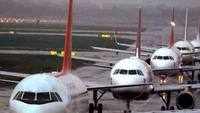Gurugram lockdown relief in numbers: 67 lakh meals and ration packets. But it still couldn’t feed all

GURUGRAM: With the announcement of the nationwide lockdown, apart from urgent efforts to check the spread of coronavirus, the civic bodies had a massive task cut out for them — ensuring the lakhs of migrant workers and poor people who had lost their livelihoods don’t go hungry.
In the two months since then, the district administration, city police, civil defence teams along with the Red Cross Society, and at least 150 volunteers worked together to distribute over around 67 lakh food packets to migrant workers, approximately one lakh packets per day, according to data compiled by the geographical information system team of GMDA.
Of this, 64 lakh packets were distributed by MCG, the administration and the Red Cross Society while the rest was distributed by a team of around 100 traffic cops along with civil defence teams. The task was not accomplished without the help of agencies like NGOs, restaurants as well as big corporates who offered space for community kitchens, additional municipal commissioner, Mahavir Prasad told TOI. “We spoke with the NGOs and assigned them areas as per their capacity. Then there were community kitchens and restaurants which provided us food,” he said, adding that a city-based developer was one of their major contributors that provided around 50,000 meals per day through ISCKON.
However, even this mammoth operation couldn’t feed every person without means, and reports of families unable to feed their children and choosing to walk back home kept emerging.
Sources within the government admitted that they were not very successful in covering the remote areas. “A lot of the relief announcements in terms of free ration have remained largely on paper. After a point, we were not able to attend all the calls being received by us,” said one of the city-based groups working with the administration.
Earlier, GMDA chief VS Kundu had said that with the summer approaching, the distribution of cooked food was becoming challenging, and there had been instances of entire batches going bad by the time they reached the distribution centres. Also, distribution of dry ration wasn’t always beneficial as many families were not being able to afford LPG cylinders.
Besides, not everyone could reach the relief centres, and dry ration was distributed to over one lakh such people, said Prasad. “When we started distributing ration kits, we realised that some people had started hoarding the ration. So, we gave more emphasis on cooked food. However, ration kits were supplied to disabled people and others who were unable to come to the relief centers.”
In the two months since then, the district administration, city police, civil defence teams along with the Red Cross Society, and at least 150 volunteers worked together to distribute over around 67 lakh food packets to migrant workers, approximately one lakh packets per day, according to data compiled by the geographical information system team of GMDA.
Of this, 64 lakh packets were distributed by MCG, the administration and the Red Cross Society while the rest was distributed by a team of around 100 traffic cops along with civil defence teams. The task was not accomplished without the help of agencies like NGOs, restaurants as well as big corporates who offered space for community kitchens, additional municipal commissioner, Mahavir Prasad told TOI. “We spoke with the NGOs and assigned them areas as per their capacity. Then there were community kitchens and restaurants which provided us food,” he said, adding that a city-based developer was one of their major contributors that provided around 50,000 meals per day through ISCKON.
However, even this mammoth operation couldn’t feed every person without means, and reports of families unable to feed their children and choosing to walk back home kept emerging.
Sources within the government admitted that they were not very successful in covering the remote areas. “A lot of the relief announcements in terms of free ration have remained largely on paper. After a point, we were not able to attend all the calls being received by us,” said one of the city-based groups working with the administration.
Earlier, GMDA chief VS Kundu had said that with the summer approaching, the distribution of cooked food was becoming challenging, and there had been instances of entire batches going bad by the time they reached the distribution centres. Also, distribution of dry ration wasn’t always beneficial as many families were not being able to afford LPG cylinders.
Besides, not everyone could reach the relief centres, and dry ration was distributed to over one lakh such people, said Prasad. “When we started distributing ration kits, we realised that some people had started hoarding the ration. So, we gave more emphasis on cooked food. However, ration kits were supplied to disabled people and others who were unable to come to the relief centers.”
Quick Links
Kerala Coronavirus Helpline NumberHaryana Coronavirus Helpline NumberUP Coronavirus Helpline NumberBareilly NewsBhopal NewsCoronavirus in DelhiCoronavirus in HyderabadCoronavirus in IndiaCoronavirus symptomsCoronavirusRajasthan Coronavirus Helpline NumberAditya ThackerayShiv SenaFire in MumbaiAP Coronavirus Helpline NumberArvind KejriwalJammu Kashmir Coronavirus Helpline NumberSrinagar encounter
Get the app








